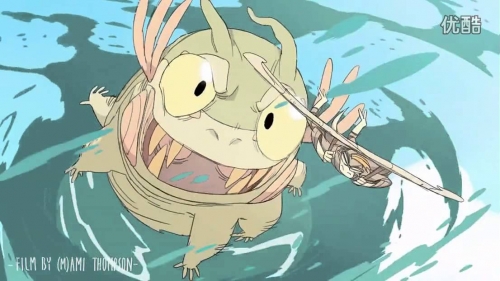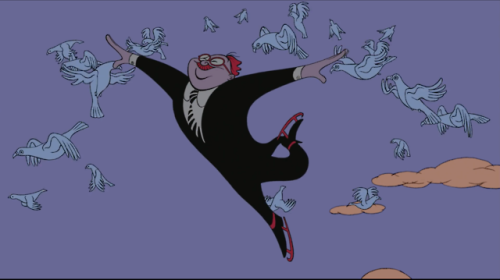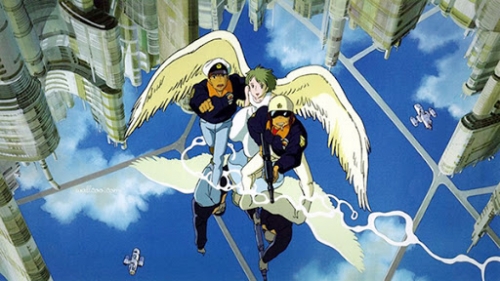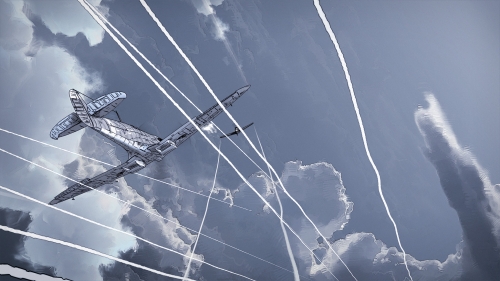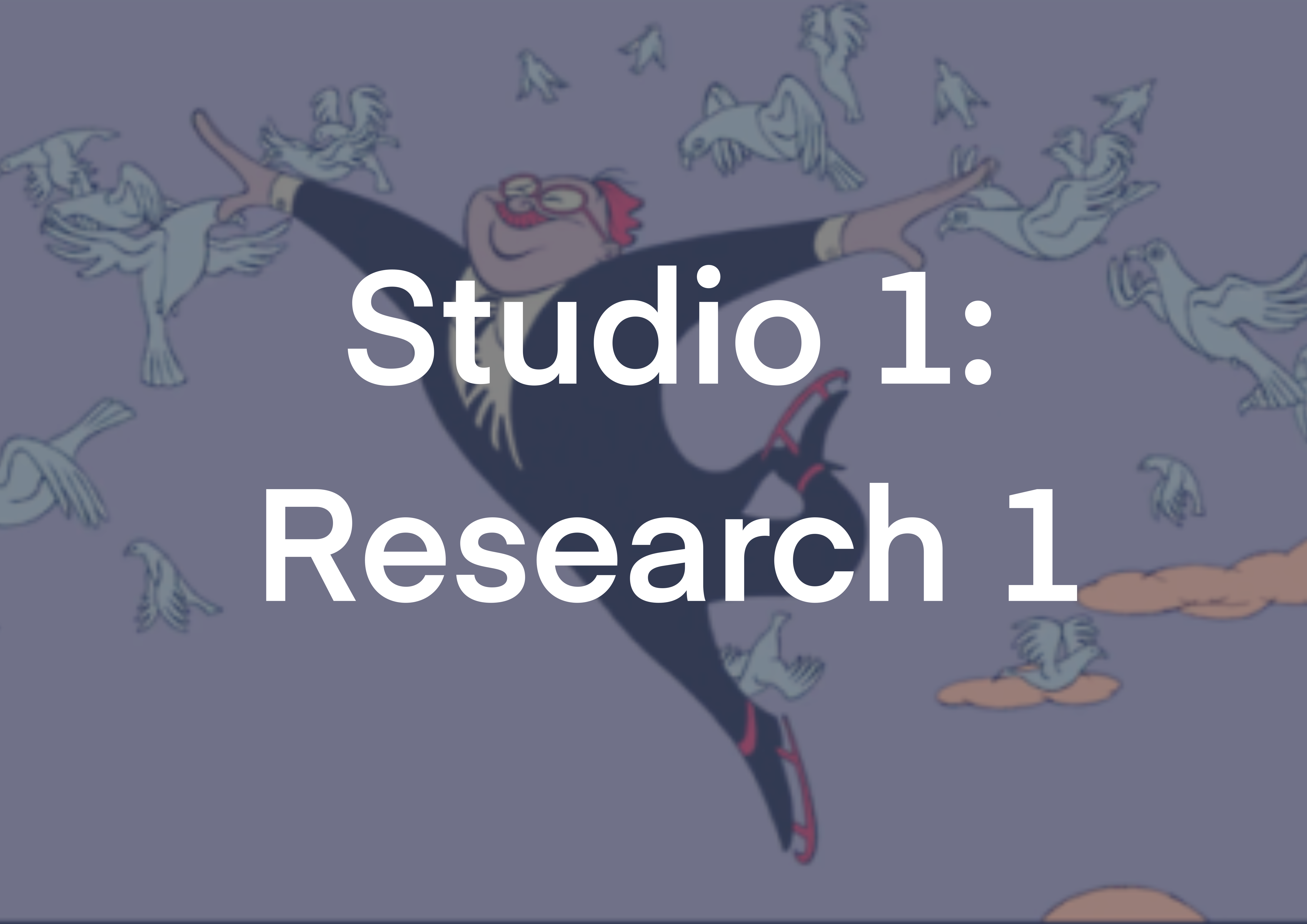
1.Rhapsody in Blue short, Fantasia 2000, directed by Eric and Susan Goldberg. Set to George Gershwin’s “Rhapsody in Blue”, based on the illustrations of Al Hirschfeld. 4 New Yorkers struggle with what’s expected of them in the 1950s.
Flying in this short functions as a symbol of freedom from constriction and similarly a release of tension. The work audibly, visually and narratively builds moments of tension and strategically releases them, culminating in the centerpiece of a character “flying” at the ice rink. The character constricts downward, hunching over and skating faster as the music builds and then bursts upwards, stretching outward as the ground drops off screen and a flock of birds explode outward around him. He then swoops around fluidly, looping around the screen. Arch’s and Xs are employed to create this feeling of smoothness and freedom during his flight.
The works impact on the field of animation is often touted. It combines the art styles of 2 prolific American Jewish artists, brings Al Hirschfeld's style into the animated realm and gives it its own life and energy and captures the mood of bustling 1950s New York.
2. Basilisk by Ami Thompson is a short comedy work about a character trying to reach a treasure chest on an island while being attacked by sea monsters.
Flying is a device used in the work as a functional action tool more than a symbol in specific. Thompson’s style is silly, exaggerated and energetic and flight lets her experiment with blocking, framing, angles and poses in the 3D space of the sky. The gliding that her character does do, in the brief moments of rest, does bring a brief sense of serenity, as flying often does, and this gives us breathing room to prepare for the next comedic attack.
Within the field of comedy animation, Thompson uses many tools of framing, blocking, angling and moving to create a high energy comedy, and has taught me some terrific ideas.
3. Paths of Hate is, according to its IMDB, “A short tale about the demons that slumber deep in the human soul and have the power to push people into the abyss of blind hate, fury and rage.” 2 men, airplane bombers during WW2 shoot at one another, desperate to kill the other while slowly losing their humanity emotionally and physically. The work is rendered in 3D.
Flight is used for a lot of different things here. The characters are separated from the ground, so we have no sense of location. It is not clear who is defending which land, and the planes are unmarked, so in terms of political values, the characters are neutral and equal (as opposed to if the same story took place over the city of Prague for example). The ground is often unseen and the clouds at times give no indication of up or down, making the flight disorienting and maddening. Isolated from the ground, the two characters in the air are the only things the viewer is able to focus on, making the experience isolating, lonely and focused. Finally, flying is the main action set piece of the short, every attack uses the direction and speed of the planes to convey hits and dodges. Flying gives the animator space and freedom when it comes to angles for each set piece, thus adding variety and impact that wouldn’t be possible in a car chase or a fist fight. I’m reminded of anime’s like Dragonball Z that send their protagonist and villain into the sky to fight, giving their large violent actions more space and add a sense of importance via scale.
The works is appreciated very much in its field I feel, having won 4 major awards and been nominated for many more. I’m not sure of its impact on my future work, but I will say it’s rare that violence bothers me in animation because I am very numb to it, but this still managed to strategically scare and upset me with its severity and there’s definitely ideas that can be taken from that.
4. On your mark is a 1995 Hayao Miyazaki directed music video for the Japanese band Chage & Aska. It features two rogue police officers rescuing an angel from a government lab to release her flying towards an uncertain future.
The angels ability to fly is unique compared to previous examples. Unlike Fantasia or Basilisk, flying isn’t available to the characters and she takes off unsurely, holding the main characters hands as they drive along and she picks up speed, eventually letting go. Her wings flapping is slow, worried and meditative. Her presence is positive in the story but is very low energy and somber, fitting with the underlying narrative that the world she’s been freed into is a nuclear wasteland. Flying is a symbol of freedom, but the short’s definition of freedom is realistically dangerous and vague, and the flying sequence is built on this idea.
In terms of my research so far, this is my favourite flight sequence thematically, because of its complexity and its evolution on typical flying symbolism.
About This Work
By Holland Kerr
Email Holland Kerr
Published On: 04/08/2020

